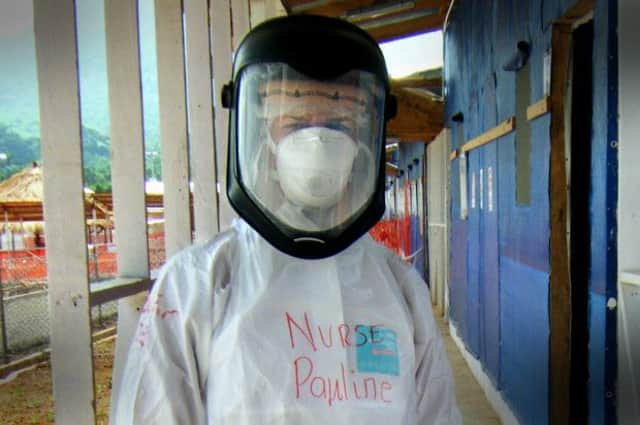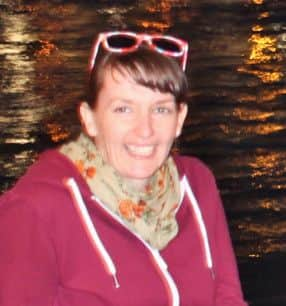Scottish Ebola patient: Doctor slates screening


Pauline Cafferkey, 39, a public health nurse at Blantyre Health Centre in South Lanarkshire, was taken to a specialist treatment centre at the Royal Free Hospital in London after returning home to Scotland from Sierra Leone on Sunday.
CONNECT WITH THE SCOTSMAN
• Subscribe to our daily newsletter (requires registration) and get the latest news, sport and business headlines delivered to your inbox every morning


Advertisement
Hide AdAdvertisement
Hide AdDr Martin Deahl, who sat next to the Scottish nurse on the flight home from west Africa, said quarantine measures for returning health workers were “confused” and described the screening process at Heathrow as “chaotic”.
And he accused health protection officials of creating unnecessary distress for passengers who shared a British Airways flight from Heathrow to Glasgow with Ms Cafferkey on Sunday by allowing her to take public transport.
The Scottish nurse was put in isolation at a Glasgow hospital early on Monday after feeling feverish, but was transferred to London in the early hours of yesterday morning in a quarantine tent after being flown to RAF Northolt in an air force plane.
She is being treated in the hospital’s high-level isolation unit where UK nurse William Pooley – who contracted Ebola in Sierra Leone earlier this year – was successfully treated.
Last night, England’s Chief Medical Officer, Dame Sally Davies, confirmed that the Scot could be treated with plasma from patients who have survived the virus, including Mr Pooley.
In a separate case, a woman healthcare worker who also recently returned from west Africa is being tested for Ebola at Aberdeen Royal Infirmary, although she is said to be “low risk”.
After complaining of feeling unwell, she was taken to Aberdeen by ambulance from Torridon Youth Hostel in the Highlands, where a number of health officials wearing protective clothing arrived to collect her.
Dr Deahl said the screening process at Heathrow was “chaotic”, with the advice given to travellers returning to Ebola-infected areas “topsy-turvy”.
Advertisement
Hide AdAdvertisement
Hide AdHe said members of his group had been told they could use public transport to travel home, but that they should then avoid crowded areas.
He said: “The thing that confused most of us was that Public Health England said we could go home from the airport in any which way we wanted – so the (London) Underground, or in Pauline’s case the flight to Glasgow.
“But once we got home we weren’t to use public transport at all or go into crowded places. I do not understand that on the one hand they’re asking us not to go into crowds, but were happy for us to travel from Heathrow.
“I think doing something about the onward journey is the important thing. If there had been alternative arrangements for Pauline, an awful lot of people on that flight to Glasgow would not be going through the anxiety and stress that I’m sure they’re going through at the moment.”
Dr Deahl said Border Agency staff at Heathrow appeared unprepared and revealed that staff ran out of thermometers to test members of his group.
He said: “The rooms were very small, the staff were small in number and seemed inadequately prepared, and the thermometers and the kit that we were given to check our own temperatures every day for the next three weeks, they basically ran out so half of us didn’t get that kit.
“Mine is supposed to be couriered over today.”
Ms Cafferkey, who had been working with Save the Children, flew back to the UK via Casablanca in Morocco and London Heathrow, arriving at Glasgow Airport at about 11:30pm on Sunday on a British Airways flight.
Someone with Ebola only becomes infectious once they develop symptoms. In this case, they only became apparent after she arrived in Scotland. The task of contacting the passengers and crew on the flights she took is now under way. That will be complicated, but officials are insisting the risk to those people is extremely low.
Advertisement
Hide AdAdvertisement
Hide AdAt a press conference in Glasgow yesterday, First Minister Nicola Sturgeon said Health Protection Scotland had so far contacted 63 out of 70 passengers on the London to Glasgow flight.
Efforts to contact the remaining seven passengers will continue, according to Dr Syed Ahmed, clinical director of the Public Health Protection Unit at NHS Greater Glasgow and Clyde.
There is no plan to test any of the other 70 passengers who were on the flight unless they develop symptoms. Health Protection Scotland has also contacted and given advice to the one person whom Ms Cafferkey came into contact with after arriving in Scotland, believed to be her partner.
When questioned about Dr Deahl’s remarks, Ms Sturgeon insisted the procedures in place “are right in terms of the risk we’re facing”.
And commenting on Ms Cafferkey’s condition, the First Minister said she was “doing as well as can be expected in the circumstances”.
A third patient has been placed in isolation at the Royal Cornwall Hospital in Treliske, Truro, after returning home from an affected country.
Ms Cafferkey, who was part of a group of up to 50 NHS healthcare workers who returned to the UK at the weekend after volunteering in Sierra Leone, is the second Briton to test positive and the first to do so on UK soil after nurse William Pooley, 29, contracted Ebola while volunteering in Sierra Leone in August before getting the all-clear following treatment at the Royal Free Hospital.
About 100 people have been tested for the virus in hospitals across England this year, most of whom had visited west Africa.
Advertisement
Hide AdAdvertisement
Hide AdThe confirmed case will raise questions about airport screening processes for passengers leaving the region and entering the UK.
Enhanced screening was rolled out at some UK airports in October, including Heathrow, with passengers having their temperature taken and completing a questionnaire on their current health, recent travel history and whether they might be at potential risk through contact with Ebola patients.
Public health officials say Ms Cafferkey was taken aside on arrival in the UK and her temperature was taken – the procedure followed for all incoming health staff who say they have been in contact with Ebola patients.
Her temperature was found to be normal and she was not feeling unwell, so she continued her journey to Glasgow.
Last month, official figures showed a total of 931 people had been assessed in the weeks since the measures were introduced at Heathrow, Gatwick, Birmingham and Manchester airports, plus London St Pancras Eurostar railway station.
UK Health Secretary Jeremy Hunt said there would be a review of the “procedures and protocols” adopted by NHS workers and other government staff working in Sierra Leone.
He said the government is doing “absolutely everything it needs to” to keep the public safe and that the measures it has put in place are working well.
Ebola is transmitted by direct contact with the bodily fluids – such as blood, vomit or faeces – of an infected person. The virus has killed more than 7,800 people, mostly in West Africa, since it broke out a year ago.
SEE ALSO
Advertisement
Hide AdAdvertisement
Hide AdSCOTSMAN TABLET AND IPHONE APPS